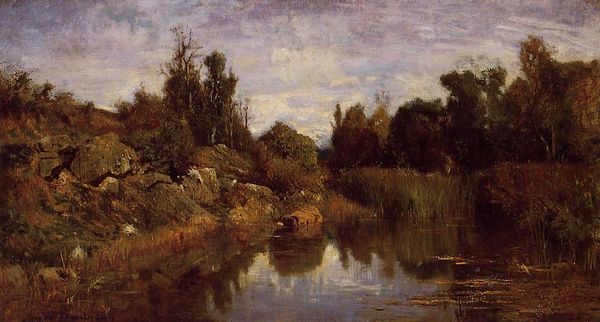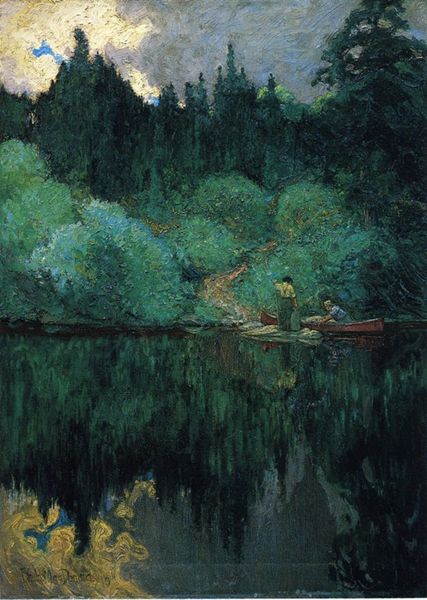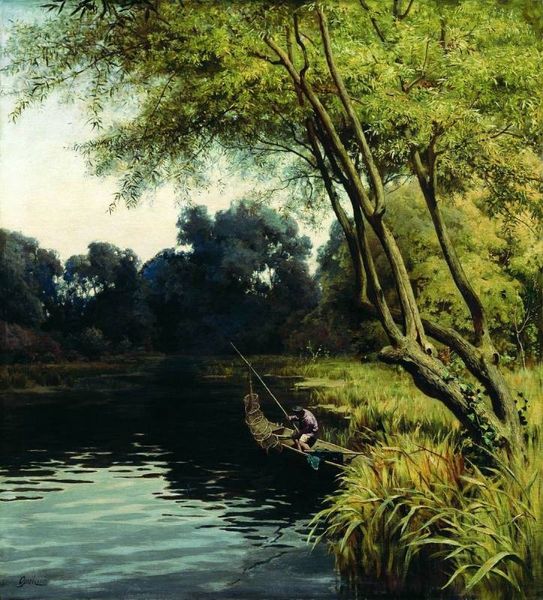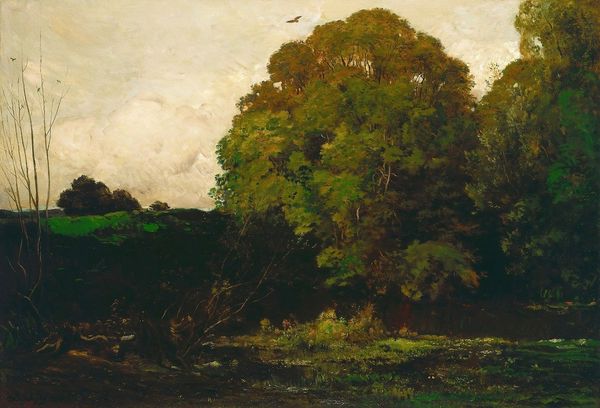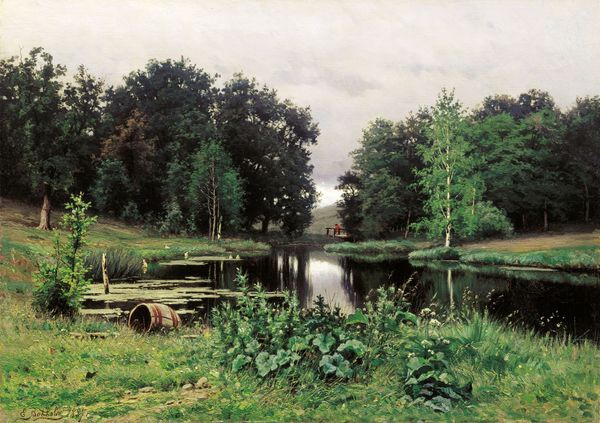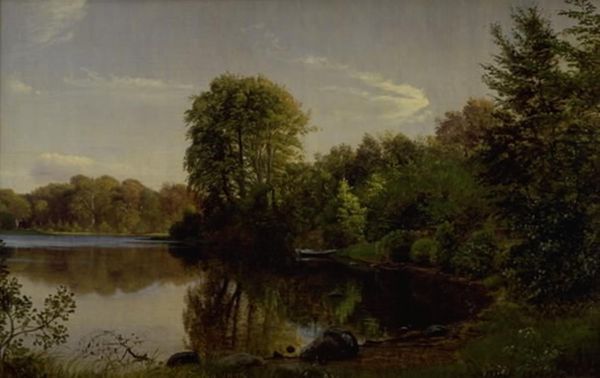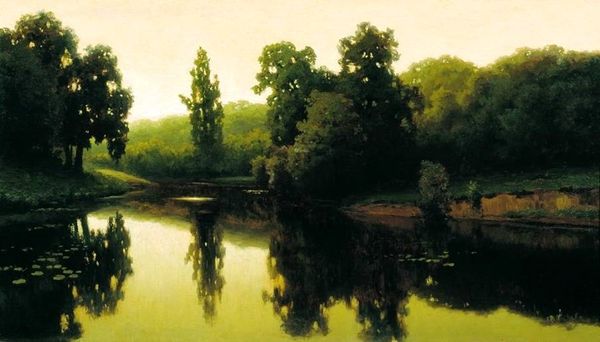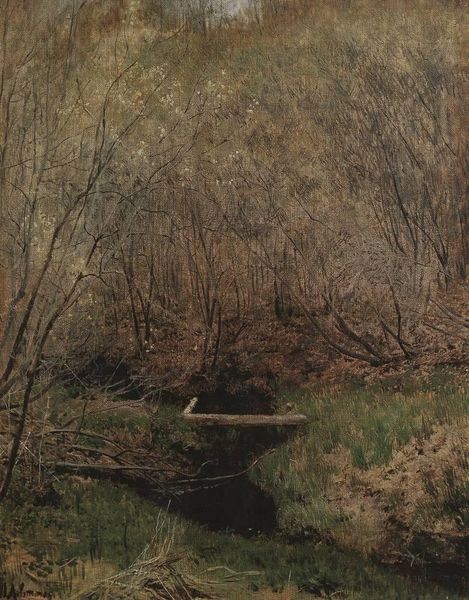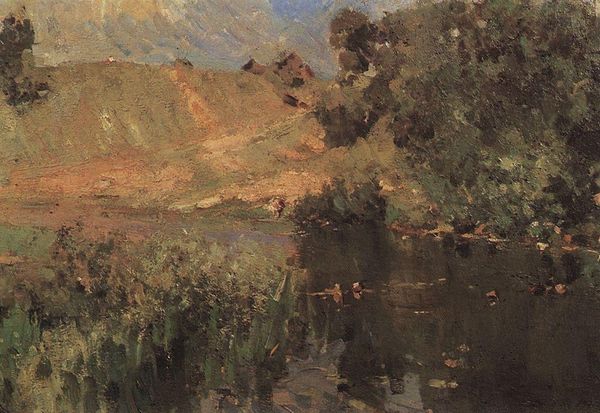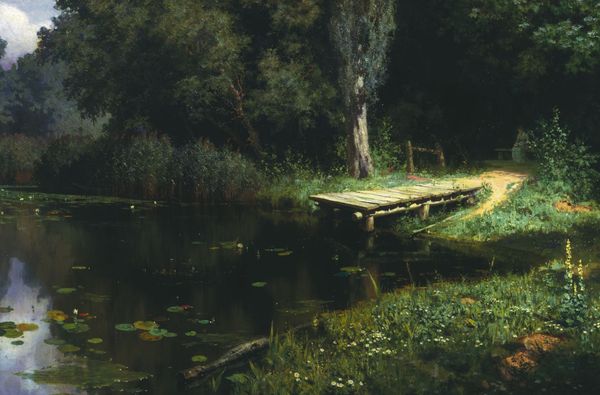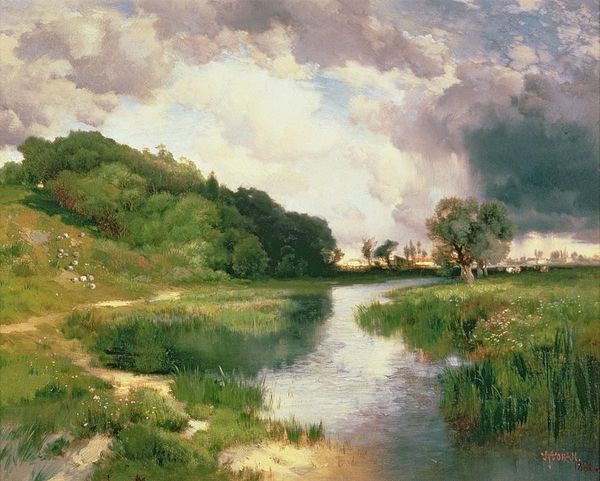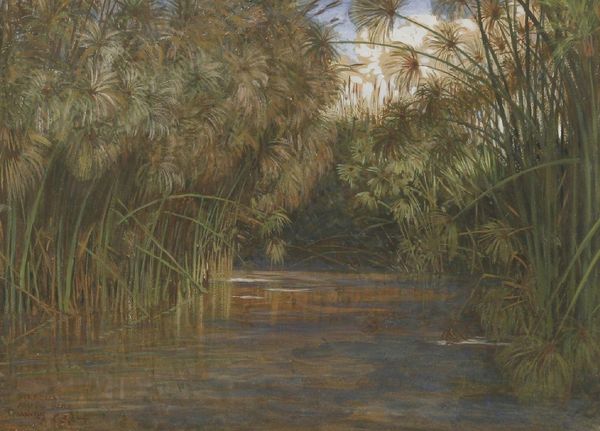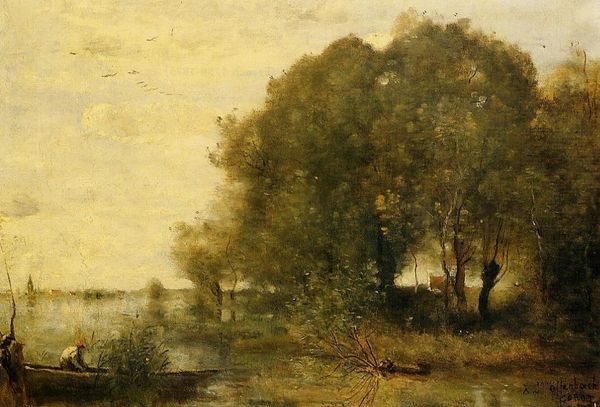
Copyright: Public domain
Curator: Isaac Levitan's "At the Park," painted around 1880, offers a serene, if somewhat melancholy, glimpse into the Russian landscape. The work, rendered in oil on canvas, demonstrates the artist’s move towards plein-air painting techniques. Editor: My first impression is a sense of tranquil observation, with muted tones that lean toward somber reflection, it's beautiful but heavy. The composition, while natural, is slightly closed-in. Curator: Yes, that feeling of being enclosed speaks to the period's preoccupation with both nature and the psychological spaces it can evoke. Levitan and other artists began moving painting from studios to the outdoors—an act that opened the artwork for observation and an intimate rendering of fleeting impressions and the reality of the environment. This reflected societal changes and evolving views on labor, land, and ownership. Editor: Exactly! And within that, what strikes me is that while appearing idyllic, this could subtly comment on land usage and access in late 19th-century Russia. Who gets to enjoy such a park? Is it a truly public space or subtly policed and segregated? The dark tones evoke the shadows lurking beneath the surface. Curator: An astute point. Levitan's career coincided with a time of growing social unrest and calls for reform. While not overtly political, artworks like these provide visual context. By focusing on naturalistic depictions and subtle color variations, he challenged viewers' perceptions and highlighted the aesthetic value of landscapes that may have previously been overlooked or deemed uninteresting in terms of the picturesque. Editor: His choice of palette also feels critical—limiting the vibrancy, focusing on greens and dark shadows that give an uneasy edge to an otherwise traditionally ‘pretty’ scene. That melancholy is powerful and points toward the anxieties of that time. I'm always fascinated how artists like Levitan communicated under the surface of state and society during these turbulent times. Curator: The way Levitan navigates that balance between artistic expression and unspoken social realities, especially through landscape, does give us insight into this very potent period of Russian art history. Editor: Indeed. Analyzing these landscapes through intersectional lenses opens many insights into cultural understandings, it goes beyond mere scenery.
Comments
No comments
Be the first to comment and join the conversation on the ultimate creative platform.
